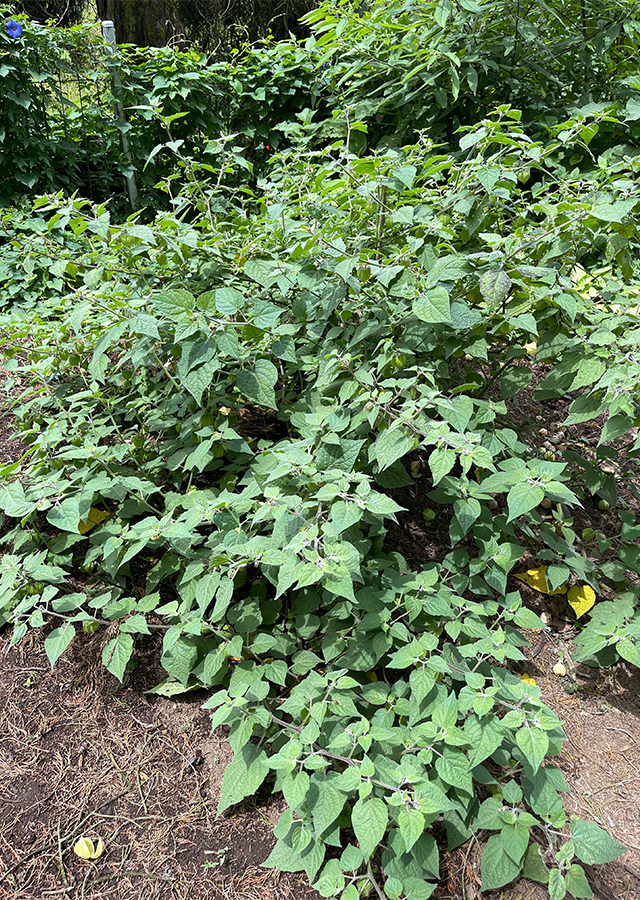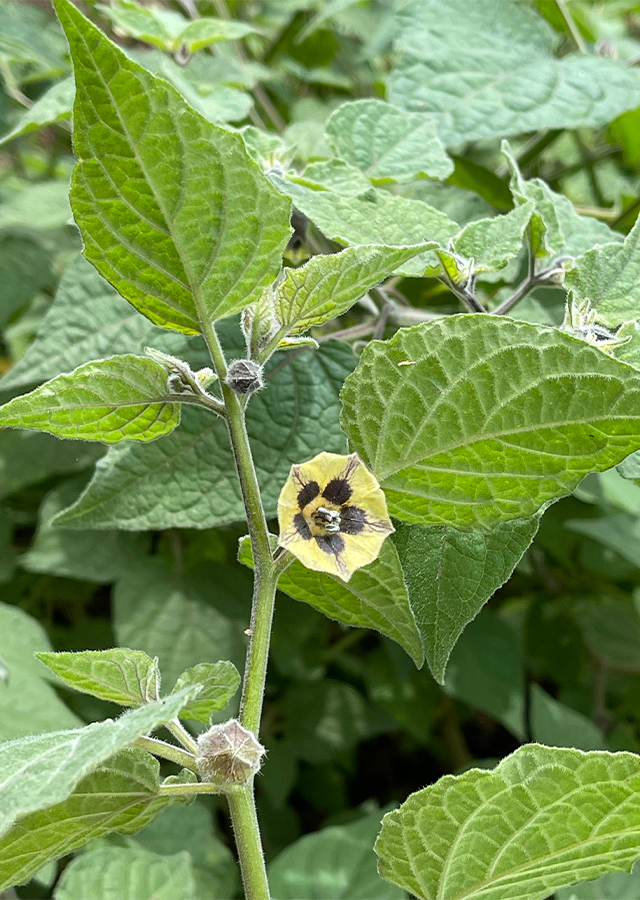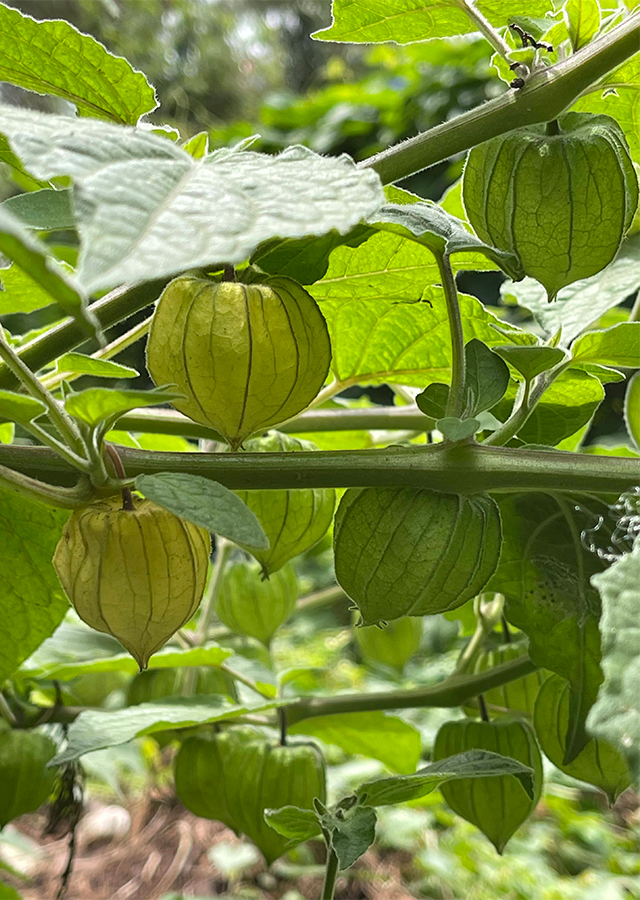Traditional Herbs from Physalis peruviana
medicine_cacing
- Take enough peru ciplukan leaves, wash them until clean.
- Crush them until they become a paste.
- Squeeze the paste\u00a0the leaves take the water.
- Drink for worm medicine and intestinal complaints.
relieves_stomach_disorders_in_children
- Take enough ciplukan leaves, wash them until clean.
- Soak the leaves and wait for some time.
- Strain then drink.
What is Physalis peruviana Looks like??



Parts of Physalis peruviana that could be used
- Leaves
- Seeds
- Fruit
Physalis peruviana Distribution
Physalis peruviana or Peruvian ciplukan is a plant that originates and grows naturally in South America, in the tropical highlands of Colombia, Chile, Ecuador and Peru. Over the past 200 years, this species has been widely cultivated and naturalized elsewhere in the tropical highlands, as well as in the subtropics and in temperate regions. This species was later found growing in Central America, India, tropical Africa, Australia, Southeast Asia, as well as in several parts of East Asia and Europe. Commercial production is found mainly in subtropical and temperate zones, particularly in South Africa, Australia and New Zealand. Some fresh fruit is imported to Europe from Kenya, Madagascar, Colombia. The cultivated Peruvian cheetah is primarily valued for its fruit. The fruit can be consumed, either directly or processed (jams, sweets, pies and cakes). The dried fruit can also be used as a substitute for yeast and as a substitute for raisins, although it is not as sweet. Peruvian ciplukan is a good source of nutrients, minerals and vitamins. The fruit is rich in vitamins A, C and B complex (thiamine, niacin and B12). Apart from being consumed as food), this species is widely used by people as an ornamental and medicinal plant. As a medicinal plant, ciplukan is widely used in various countries where it is believed to provide good health benefits. In traditional Peruvian medicine, this species is widely used to treat pterygium (eye disease). In Taiwan, Peruvian ciplukan is a popular folk medicine, used to treat cancer.Agroecology of Physalis peruviana
The habitat of Physalis peruviana or Peruvian ciplukan is generally found in coastal areas and disturbed areas, it is also found growing in forests, forest edges, river borders, gardens and cultivation areas. In Indonesia, this species is found at altitudes ranging from 700-2,300 m above sea level, but grows best above 1,500 m above sea level. Another source said, in tropical areas, an altitude above 800 m above sea level is optimal growth which produces better results. Peruvian spruce grows best in areas where the average annual temperature is in the range of 16 - 25 °C, although it can tolerate 10 - 32 °C, and prefers an average annual rainfall in the range of 1,500 - 2,300 mm, with tolerance 800 - 4,300 mm. Grows well in full sun and partial shade. Capable of growing in a variety of well-drained soils (with a pH in the range of 4.5 to 8.2), but grows best in sandy to rocky soils, rich in humus but able to tolerate poor soils. Peruvian cheetahs don't like clay, heavy or too wet soil. This species is tolerant of light frost.
Morphology of Physalis peruviana
- Fibrous roots.
- Stems are unpleasantly scented, branched. Branches are angular, ribbed, spreading, sometimes tinged purple or mauve, soft hairy, dense. Stems become more or less woody (soft), especially at the base. The lower stem is creeping, densely pubescent.
- Leaves are simple, unifoliate, solitary or geminate, green which then turns yellow and falls after the fruit ripens, long leaf stalks 0.5\u20135.5 cm, slightly sheathed at the base. Leaf blades are broadly ovate to heart-shaped, leaf tips are acuminate or pointed, leaf edges are flat to sinuate-dentate or dentate, sometimes with several obtuse lobes , some teeth are unequal. The leaf blades have a velvety texture. Asymmetrically in pairs at each node (alternating leaf arrangement).
- Flowers bisexual, solitary, axillary, erect to nodding, hairy, bell-shaped, corolla yellow with distinct purplish-brown spots at flower throat, slightly 5-lobed, densely pubescent especially near base. Surrounded by purplish green, hairy, conspicuously veined, toothed or 5-lobed petals, fused at the base with a triangular tip. The flowers are solitary and appear in the leaf axils. When the flower falls, the light brown petals will enlarge and enclose the fruit. Purple pistil, straight or slightly curved upwards. Stamens in or slightly protruding, subequal, purple filaments, attached to the corolla tube near the base, equipped with a few hairs. The anthers are bluish to red-purple in color. The flower stalks are densely covered with fine hairs.
- Berries, globose with smooth, shiny skin, green fruit turns golden or yellow to orange when ripe, flesh is juicy, contains 100-300 seeds, flesh color is golden- yellow to orange. It has a slightly sour and sweet taste with a grape-like sour taste. Each is enclosed in a husk-like bladder which will become thin when ripe.
- There are many seeds in each fruit, small, flat, yellowish in color and embedded in the juicy flesh of the fruit, oval in shape, sometimes reniform, reticulate-foveate throughout.
Cultivation of Physalis peruviana
- Propagates naturally by seed but can be propagated artificially by stem cuttings treated with rooting hormone.
- Recommended spacing ranges from 0.9 m \u00d7 0.45 m to 1.8 m \u00d7 0.9 m (2.5-0.6 plants/m2), mainly depending on labor costs and desired harvest duration. Wide spacing produces larger berries.
Physalis peruviana, more details :
Chemical Content of Physalis peruvianaPhytosterols, oleic acid, linoic acid, palmitic acid, stearic acid, withanolides, physalins, routine, myricetin, kaempferol, alkaloids, phenols, saponins, tannins, glycosides, 11 terpene compounds (six monoterpenoids and five sesquiterpenes), 11 esters, two compounds phenolics, two aldehydes, two ketones, and one lactone.
Benefits of Physalis peruviana
Treating inflammation, jaundice, pterygium (an eye disorder characterized by the appearance of pink flesh-like membranes on the conjunctiva), deworming, relieving stomach disorders in children, treating cancer, diabetes, diarrhea, malaria, asthma, hepatitis, dermatitis, leukemia, rheumatism, glaucoma, improves eyesight, protects the liver and kidneys against fibrosis, maintains the immune system, maintains healthy bones and digestive health, improves cognitive abilities, memory, focus and concentration skills. Has activity as an antioxidant, antipyretic, anticancer, anti-inflammatory, diuretic and anthelmintic.
Simplisia of Physalis peruviana
- Prepare enough ciplukan leaves, wash thoroughly with running water then drain.
- Dry in the sun or in an oven at a temperature\u00a040\u00b0C until the water content\u00a010%.
- Store in a clean, airtight container .
Another Facts for Physalis peruviana :
Synonym of Physalis peruvianaAlkekengi pubescens Moench, Boberella peruviana (L.) E.H.L.Krause, Physalis barbadensis Lam.
Habitus of Physalis peruviana
Herb. Erect herb, annual, about 0.3�2.5 m high
Habitat of Physalis peruviana
- Forest", "Coastal", "Roadside", "Shrub Area", "Grassland", "Land
No comments:
Post a Comment